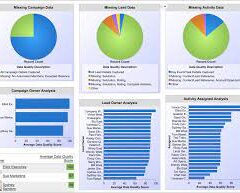Long and Winding Data Success Road
Fostering a Data-Driven Culture for Informed Decision-Making
Enhancing trust in data goes beyond technical solutions; it hinges on cultivating a culture that instills confidence and fosters widespread adoption. Data culture, defined as the collective behaviors and beliefs of individuals who value, practice, and promote data usage for improved decision-making, empowers all members of an organization with insights to address complex business challenges.
Key Insights:
- Barriers to a Strong Data Culture:
- Privacy and data concerns
- Data quality issues
- Limited budget
- Insufficient data analysis tools
- Limited training
- Overcoming Barriers: To cultivate a robust data culture, teams must overcome key barriers, including security concerns, insufficient tools, and training. Positive steps are being taken by analytics and IT leaders, with over 70% increasing budgets for data analysis tools and training.
- Benefits of a Strong Data Culture: Analytics and IT leaders recognize several benefits associated with a strong data culture, including greater productivity, innovation, improved customer service, confident decision-making, and cost savings.
Redefining Data Governance for Trustworthiness
Data governance extends beyond a mere set of rules and restrictions; strategically employed, it becomes a vital tool for reinforcing data trustworthiness. An impressive 85% of analytics and IT leaders use data governance to ensure and certify baseline data quality. It entails establishing rules or policies governing the collection, management, storage, measurement, and communication of information, setting parameters for data access, accuracy, privacy, security, and retention.
Governance in Action:
- 86% of high-maturity organizations leverage governance to democratize data access, compared to 70% of low-maturity organizations.
A Multi-Pronged Approach Defying Data Gravity

Data gravity, the notion that accumulating large data volumes in a specific location or system attracts additional applications and services, poses challenges for data relocation. Leaders in analytics and IT adopt a multi-pronged approach, employing an average of 3.2 different strategies to counteract data gravity.
Strategies to Mitigate Data Gravity:
- Utilizing cloud solutions, including hybrid and multiple cloud options
- Prioritizing flexibility in choosing data residence over a locked-in environment
- Deploying a variety of tactics to address data gravity challenges











